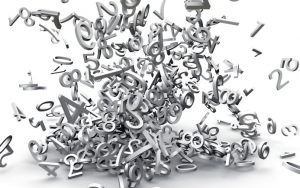 Do you have a big decision that you’ve been putting off? You’re not alone. Many investors want to choose between options A, B and C, but end up choosing D, as in Do Nothing. Inertia can be a big roadblock to creating a portfolio and financial plan that match your needs. Here are a few situations we run into with clients that may help you extricate yourself from inertia’s sticky grip.
Do you have a big decision that you’ve been putting off? You’re not alone. Many investors want to choose between options A, B and C, but end up choosing D, as in Do Nothing. Inertia can be a big roadblock to creating a portfolio and financial plan that match your needs. Here are a few situations we run into with clients that may help you extricate yourself from inertia’s sticky grip.
It’s what I’ve always had
Accepting your current investments is a choice. Before you make that choice, ask yourself, “What do I want my money to do for me?” Check that your status quo portfolio, taken as a whole, matches up with your answer. Many investors hold onto legacy investments they’ve had for years because…well, just because they’ve always had them. If you’re not actively matching your investments up with your personal and family goals, it’s time to look seriously at making changes. We call that moving from current state to future state. 
It’s worked for years
We encounter many investors with big holdings in single stocks — stocks that have gained nicely in value for decades, and paid plush dividends. It’s tempting to picture those nice results lasting forever, but they can reverse without warning. Citigroup stock paid steady and rising dividends for 20 years, until they didn’t. In July 2008 it paid a dividend of $3.20 with a share price of $185. Six months later its dividend was $.10 and the shares were down -90%. Today Citi isn’t even close to its previous high. Comfort with past results can lead to a false sense of security and perilous investment inertia. Owning single stocks, no matter how much you love them, is dangerous. Diversification can bring big improvements to your risk level.
It feels safe
Holding cash feels safe, but ask yourself, “How much cash do I really need?” Because cash holdings lose ground to inflation every day, we don’t view cash as an investment and we encourage investors to take the same view. Yes, keep cash on hand for six months of living expenses, taxes due, upcoming down payments and tuition, but to keep more than that serves little purpose. A big cash horde is usually a sign of inertia in the decision-making process. One solution — phase cash balances into investments over time. The technique, known as dollar cost averaging, is one way we avoid nasty surprises due to inadvertent market timing. That’s something we regularly do for clients.
I can’t decide
We have access to far more data than we need. It would seem prudent to evaluate all of the possible data points before making critical decisions. That strategy can doom even the most educated analytical investors as the data leads them down diverging paths, enhancing cognitive biases traps along the way, and ends in paralysis by data overload. If you take the opposite approach and try to boil down decisions to a single metric like Morningstar ratings, style boxes or expense ratios, you’ve replaced one mistake with another. For a start, some examples of the data we look for are total assets in a fund, the costs of owning that fund, how well that fund represents what it is supposed to represent, its trading liquidity and bid/ask spread, the legal structure of the investment in the case of financial stress, and a smattering of statistics like reversion to the mean, maximum drawdown, annual and tri-annual historical volatility. Knowing what you’re looking for – signals in the noise – saves you time.
The Internet said so
It’s tempting to google the answer to everything. We all like instant gratification and the wisdom of crowds can be powerful. However, online forums, blogs, articles and journalists (professional, amateur and fake) can lead you far afield. Google a question about a 401k and within a few clicks you’re reading fervent opinions about Trump, owning silver and the merits of the S&P 500 – drama drives ad revenue. If you need help, ask a professional. We’re here to cut through the noise to help you make more effective decisions.
There are times when doing nothing is the best option. But make sure doing nothing is a conscious decision, and not the result of procrastination, confusion or overload. What decisions are you currently working on?
Max Osbon – mosbon@osboncapital.com
Weekly Articles by Osbon Capital Management:
"*" indicates required fields
